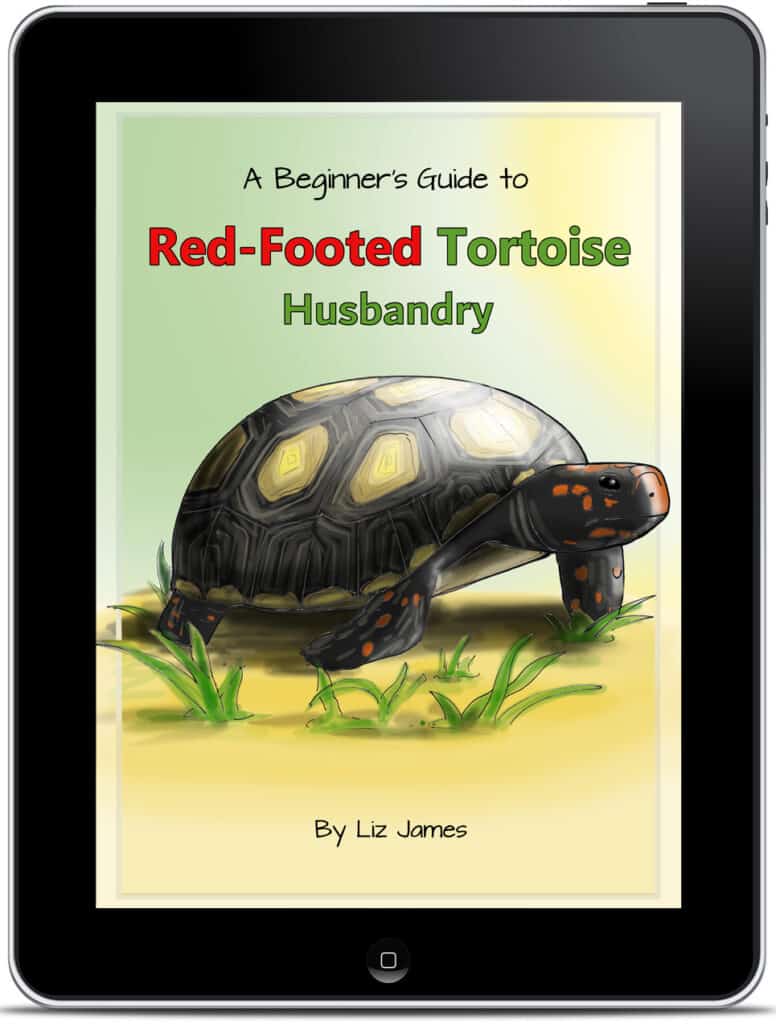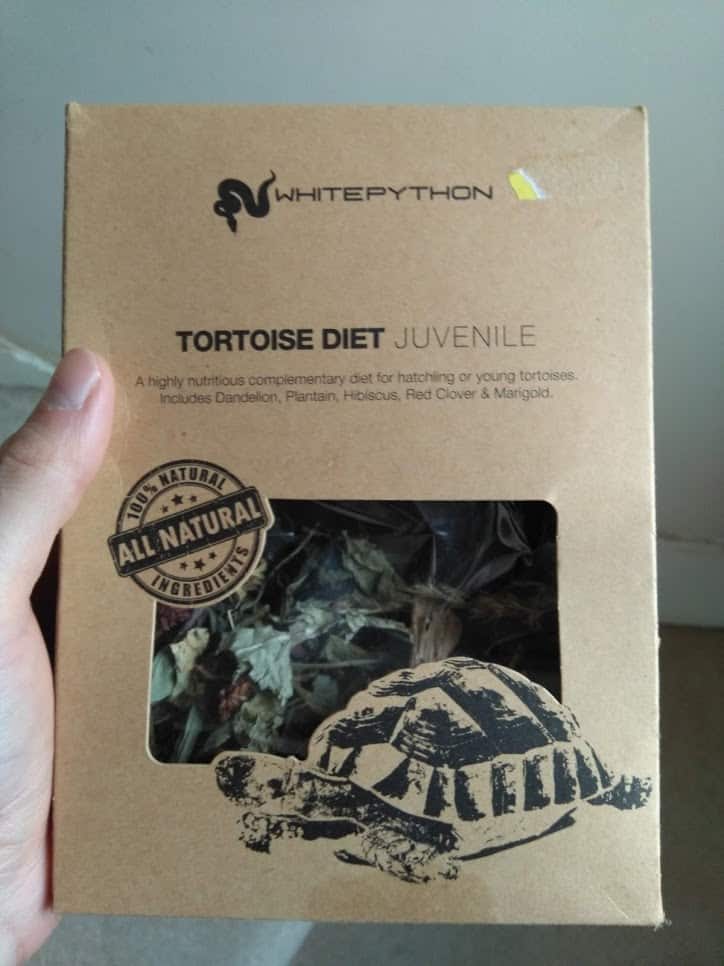Tortoises are primarily herbiverous animals and consume a range of different weeds, grasses, and leafy vegetables, as well as commercially available tortoise feeds. The nutritional needs of each species differs slightly, for example some require slightly more protein, and others require less variation in their diet.
For a really great resource on feeding your tortoise with plants grown in your yard or garden, check out this book available on Ebay. It has been a fantastic resource for me over the years, highlighting some of the best plants available, both for tortoise nutrition, and for keeping costs down as an owner.
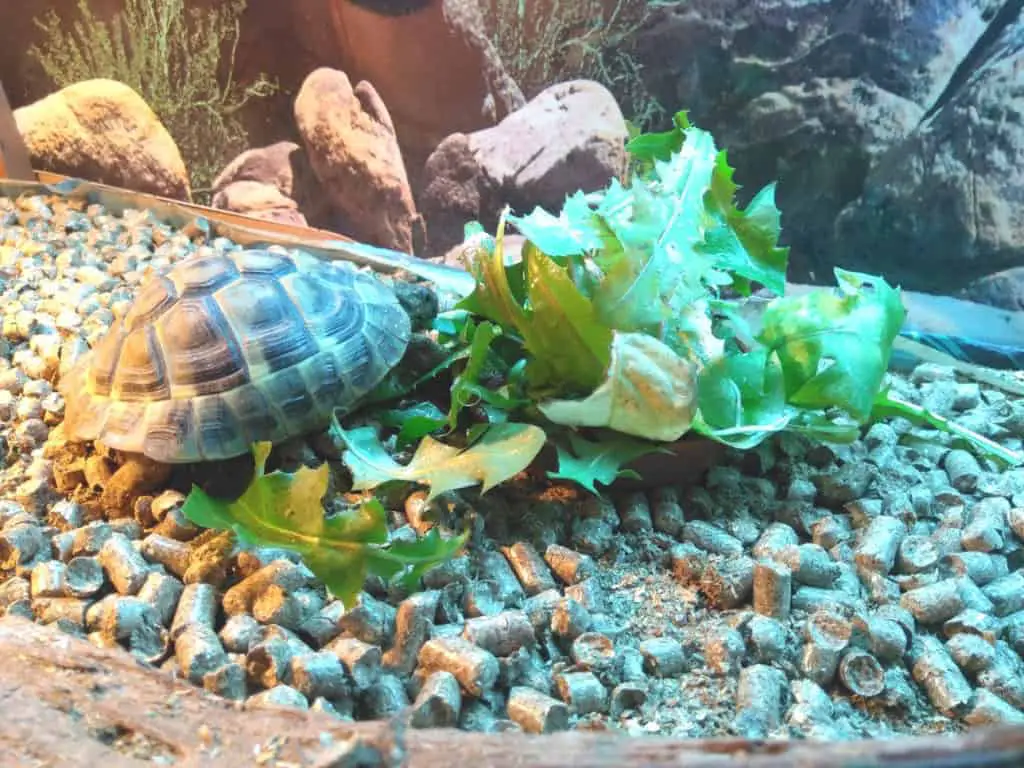
Tortoise Breeds Diet Summary
| Breed | Ideal Bulk of Diet | Shop bought substitutes When Ideal Diet Unavailable | Additions Once or Twice Per Week | Very Rare Treat | Never Feed |
|---|---|---|---|---|---|
| Hermann's / Russian / Marginated / Spur Thigh | Weeds/plants - dandelion, clover, honeysuckle, plantain (weed not the banana like fruit), mallow, white nettle, corn poppy, chickweed, bindweeds, hawkbit, viola's, goats beard, nipplewort | Leafy salads, watercress, curly kale, brussel tops, spring greens, coriander, parsley, rocket Pellets (ideally Mazuri pellets) | carrot, parsnip, courgette, bell peppers, cucumber, cabbage | Piece of strawberry, melon or apple | Citrus fruits, meat, grains, carrion, dog and cat food |
| Leopard | Grass (eg timothy hay and orchard grass hay), various succulents (eg prickly pear cactus), crassulas, thistles, hibiscus leaves and flowers, grape leaves, escarole, mulberry tree leaves | Beans, broccoli, cabbage, carrots, cucumber, pumpkin Pellets (ideally Mazuri pellets) | apricots, bananas, blackberries, dates, figs, watermelon | orange, gooseberries, mandarins, mango, passionfruit, peach, pineapple, plum, paupau, tomato | meat, grains, carrion, dog and cat food |
| Indian Star | Grass (eg Timothy hay, Bermuda grass, orchard grass, ryegrass, alfalfa, and fescue) Weeds/plants - dandelion, clover, honeysuckle, plantain (weed not the banana like fruit), mallow, white nettle, corn poppy, chickweed, bindweeds, hawkbit, viola's, goats beard, nipplewort, various succulents (eg prickly pear cactus) | Parsley, greens, escarole, mustard greens, watercress, brussel tops, coriander, rocket | Curly kale, spring green cabbage | None! | Fruit, meat, grains, beans, carrion, dog and cat food |
| Sulcata | Grass 90% of diet (eg timothy hay and orchard grass hay, either shop bought or grown at home) | collard greens, kale, mustard, turnip, dandelion greens | alfalfa hay, carrots, winter squash, sweet potatoes, pumpkin, broccoli, corn on the cob, parsley, spinach, rhubarb | strawberries, chunks of bananas with skin, cantaloupe with rind, berries, chunks of peaches, apricots, pears and apples | Citrus fruits, meat, grains, carrion, dog and cat food |
| Red/Yellow Foot Tortoise | Weeds/plants - dandelion, clover, honeysuckle, plantain (weed not the banana like fruit), mallow, white nettle, corn poppy, chickweed, bindweeds, hawkbit, viola's, goats beard, nipplewort | Leafy salads, watercress, curly kale, brussel tops, spring greens, coriander, parsley, rocket Pellets (ideally Mazuri pellets) | Low fat cat food, slugs, snails, worms and beetles, hard-boiled eggs steamed or boiled chicken or shrimp. Fruits - mango, papaya, melon, blackberries, blueberries, guava, watermelon, strawberries, apples | Squash, Pumpkin, Zucchini | Meat and high protein items more than twice per week |
The Difference Between Turtle and Tortoise Diets
In the USA tortoises aren’t usually distinguished from aquatic turtles by name, with all shelled reptiles commonly identified with the blanket moniker ‘turtle’.
Whilst this is a harmless generalisation most of the time, when it comes to meeting the dietary requirements of tortoises this confusion in terminology has the potential to lead to tortoises being fed the wrong foods. This can be harmful, especially if kept up for many years.
Turtles in general require a diet which is higher in protein than most tortoises. They tend to eat insects, small fish, and commercially available turtle food that’s higher in protein than equivalent products available for most tortoises.
With a few exceptions which I’ll cover below, tortoises on the other hand are strictly herbivorous, with a diet almost exclusively comprised of leafy green vegetables, and a small amount of fruit. Such foods are not totally devoid of protein, they simply contain it in lower amounts, but this is more than enough for most tortoise species.
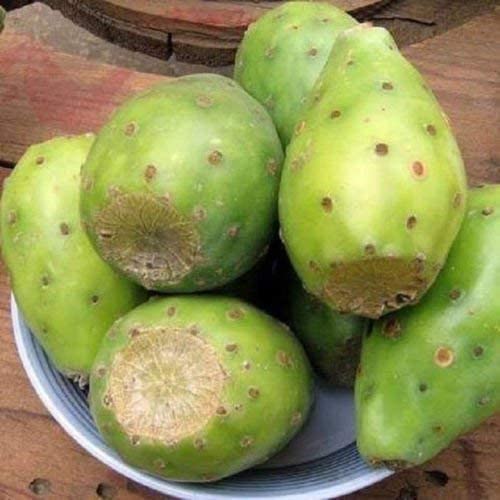
Subtropical and Mediterranean Tortoise Diet
The bulk of tortoise breeds fall into what I would call a ‘sub-tropical’ species bracket. Such species include:
- Mediterranean Spur Thigh Tortoises (Greek Tortoises)
- Hermann’s Tortoise
- Marginated Tortoise
- Russian Tortoises (Horsfields tortoise)
- North American Desert Tortoise
These species of tortoise are indigenous to semi arid grasslands that are populated with shrubs and weeds and succulents, which form the bulk of their diet in the wild.
Whilst it’s not unheard of for these species to be spotted gobbling the occasional slug, for all intents and purposes they should be thought of as strictly herbivorous from an owner’s point of view, as excess protein isn’t necessary in their diet.
The Bulk
Shop bought salad mixes vary in their nutritional value, with something like iceberg lettuce offering little but a source of water. However other greens such as kale, rocket, and baby leaf mixtures are all nutritious options, and different combinations of these should form part of the bulk of a tortoise’s diet.
Besides the shop bought stuff, it’s good to throw in wild leaves (or what you might commonly think of as weeds), in particular dandelion flowers and leaves, clover, sow thistle and bramble leaves (nothing too prickly!), and a range of other flowers and weeds.
All in all the ‘leafy green’ component, of your tortoise’s diet, whether shop bought or picked from your garden or yard, should form about 80% of their food intake.

Succulents such as Opuntia or ‘Prickly Pear’ cacti are also fantastic if you are able to provide them – they are a source of excellent nutrition and hydration. The trouble is these aren’t as readily available as much of the other weeds and leafy greens tortoises often eat, but if you’re prepared to grow and cultivate them, you’ll have a great alternative food source to choose from.
Occasional Additions
Besides leafy green vegetables tortoises are pretty keen on other ‘lumpier’ veg such as peppers, cauliflower or broccoli, and even butternut squash.
These foods should only be provided once or twice per week, as they don’t really add a lot that the ‘primary’ foods described above can’t.
Rare Treats
Unsurprisingly, fruit should be provided the most scarcely of all, and never citrus varieties. I would stick with:
- Strawberries
- Melon
- Mango
- Cherries
- Grapes
- Pear
- Peach
I would only provide a small amount of fruit once every couple of weeks. Whilst the sweetness of fruit is tasty for tortoises, too much sugar isn’t considered healthy because it isn’t what these types of tortoise have evolved to digest, so it could upset their intestinal flora, leading to parasitic infections.
Fluid Intake
Adequate hydration is of course the most important component of all in any tortoise’s diet, and fresh clean water should be provided on a daily basis.
You might not see your tortoise drink too much, but it’s important that it be there whenever they do feel the need to drink.
Furthermore tortoises are well known for being able to take in water from both ends (yes really!) so it’s important to place them in a shallow tray of water once or twice a week for 10 or 15 minutes so they can have a proper soak and the chance to take on additional water if necessary.
Tropical Tortoise Diet
Tropical tortoises are a slightly different kettle of fish as far as diet goes. These species are native to tropical jungle regions in Africa and South America, as well as the arid grasslands of sub Saharan Africa.
As you can imagine the species native to jungle regions will differ slightly to those from the tropical grasslands, and whilst their exact dietary needs differ slightly, there are similarities as well which I’ll cover below.
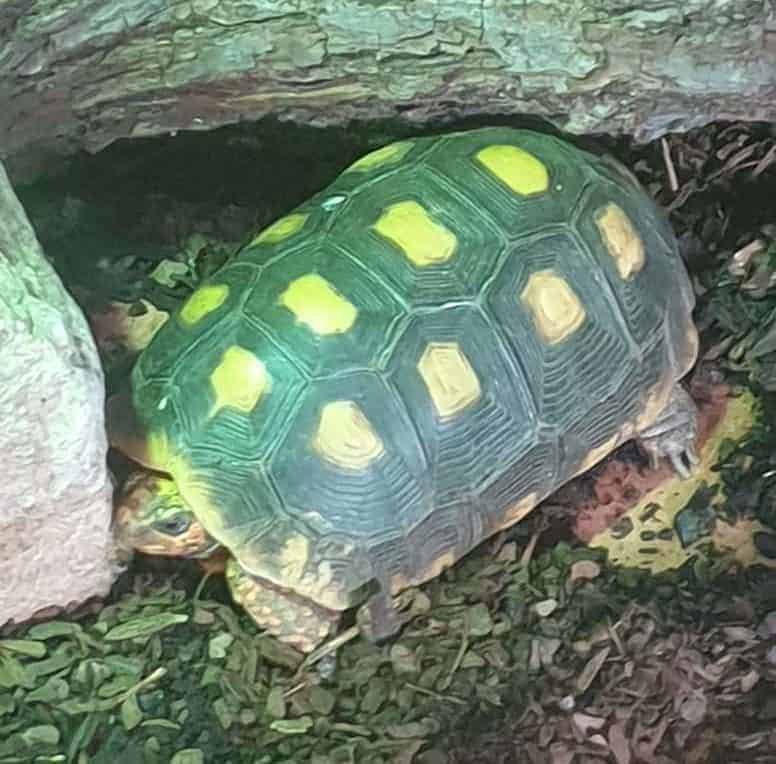
Jungles and Rainforests
This type of habitat is far more varied in its flora and fauna compared to sub tropical regions. Dense forests provide a bountiful supply of everything from fruits to small rodents.
This means that jungle tropical tortoises have evolved to be omnivorous and able to digest a wider range of food groups without issue.
Jungle Tropical Tortoise Breeds include:
- Red Foot Tortoises and Yellow Foot Tortoises- native to the rainforests of South America
- Burmese Brown Tortoise – native to the forests of South East Asia
Bulk of diet
Despite their wider tolerance to different foods, the basic diet of Jungle tropical tortoises shouldn’t differ dramatically from subtropical species. So the same 80% leafy green vegetable approach should be adopted as per sub tropical tortoises.
Occasional Additions
The minor difference in the tropical tortoise diet is that fruits can be offered with the same level of frequency as ‘lumpy vegetables’ in the subtropical diet.
Additional Protein Sources
Jungle tortoises will happily scoff carrion (dead animal flesh) given its abundance in the jungle environment. None the less you shouldn’t go too crazy with feeding too much additional protein to your jungle tortoise. Provide a single small piece of meat or protein rich food once per week. Such foods include:
- Earthworms
- Low fat high protein dog food
- Cooked chicken
- Tinned fish (packed in unsalted water)
Tropical Arid Grasslands and Dry Forests
Tortoises indigenous to these regions more or less occupy the halfway house between subtropical and jungle tortoises as far as their dietary requirements go. I would sum it up by saying they are more or less totally herbivorous…with a couple of exceptions.
Arid Grassland/Dry Jungle Tropical Tortoise Species
- African Spur Tortoises or Sulcata Tortoises- not to be confused with mediterranean spur thigh tortoises, this species is the third largest in the world and native to the dry grasslands of sub saharan Africa
- Leopard Tortoise – A smaller tortoise also native to dry grasslands in Africa
- Indian Star Tortoise – An endangered but beautiful species native to dry scrub and forest lands in central Asia
Sulcata and Leopard tortoises are predominantly grazers, so much like sheep they spend their days chomping away on grass. As such, keeping them outdoors with plenty of verdant grass to graze on is the best policy you can adopt. Alongside this you should also include all the usual leafy green veg you would provide for any other species.
Indian Star Tortoises can be thought of much like jungle tortoises, in as much as that they need a little bit of extra protein in their diet, although not quite as much. A weekly offering of a small piece of meat or fish will be more than enough to meet their needs.
Naturally Homegrown Foods are Best
Whilst shop bought vegetables can be nutritious enough as long as they’re washed, and ideally organic varieties (I’m not sure why some people argue otherwise), there’s no denying that home grown foods, or more specifically foods home grown by nature, are the healthiest option for tortoises.
The idea is to simulate the type of foraging behaviour that tortoises engage in, for the simple reason that nature knows best, so if it ain’t broke don’t fix it!
The weeds, grasses and flowers found in the grass and scrub lands of natural tortoise habitats are always going to be the go to choice for nearly all species of tortoise, so you should exploit whichever of these you have on hand, and also look to plant and grow other varieties if you can.
I won’t list every possible plant you could feed your tortoise, as there are many lists available elsewhere, but one of the most comprehensive of which can be found here.
My personal preference is to provide dandelions for my Hermann’s tortoise because they’re in such great abundance where I live, and of course clover and fescue grasses are also available as the ‘substrate’ in my outdoor enclosure, so they’re always on hand when desired.
Commercially Available Dry Food Products
There are specially prepared ‘dry’ tortoise foods available on the market which are a good way to add a bit of interest and variety to your tortoise diet.
These products are particularly useful for giving your tortoise a chance to eat a plant or weed that you haven’t had a chance to successfully grow yourself. For example I have a dry mix that includes Red Clover, Marigold, and Plantain, none of which I would normally have to hand.
I would advise feeding your tortoise such products sparingly, in much the same way as non leafy green veg, as being dried out foods I question how nutritious they can really be, but certainly as a supplementary food they’re a great option.
Foods to Avoid Altogether
As you might expect, what constitutes food unsuitable for tortoises is a subject of great debate. Some people write off shop bought foods altogether because of the presence of pesticides. Personally I disagree with this, as long as suitable shop bought foods don’t form the bulk of your tortoise’s diet.
Almost all protein rich foods should be taken off the menu for all but red foot tortoises. People get alarmed when things like dog food are provided as tortoise food, and rightly so. However, again for red foot tortoises a small amount of dog food can provide the protein they require.
Citrus fruits are a definite no no, and that goes for all tortoises. The excess sugars and citric acid is likely to cause stomach upset.
In truth nothing that would be considered ‘food’ to mammals would be toxic to tortoises, but you just need to adopt best practice and apply common sense, when choosing appropriate foods.
Foods that are Poisonous/Toxic
Things get more critical when you’re choosing between plants that are a lot less familiar as ‘food’ and that may in fact be toxic.
Exercise caution when choosing flowers; for example buttercups, daffodils and foxgloves for example are all commonly found in UK gardens, yet all are toxic to tortoises, having the potential to be fatal if consumed in high enough doses.
Thankfully tortoises will steer clear of toxic plants if they come across them whilst foraging outdoors, but problems can occur if you feed them to an indoor dwelling tortoise that doesn’t have the choice to eat anything else.
Supplements
Besides food and water the other important element of a tortoise’s diet is supplementation, or more specifically calcium supplementation. Calcium is an important ingredient in the ongoing growth and development of a healthy shell and skeleton.
Whilst many of the plants and vegetables tortoises eat do contain calcium, it often isn’t in high enough quantities, or at least consistently high enough quantities to meet the tortoise’s needs.
There are a number of different products/methods of supplying additional calcium to your tortoise beyond that found naturally in the foods they eat. These include:
- Cuttlefish Bone (Cuttlebone)
- ‘Tortoise Block’
- Calcium powder supplements
All of these are great sources, but the issue is that some of them (such as tortoise block) contain other minerals such as phosphorus, which while required by the tortoise, might be present in other foods they eat regularly, thus pushing the tortoise’s intake to a potentially unhealthy level.
As I understand it tortoises can’t have too much pure calcium carbonate in their diet, so I tend to stick with just that, a supplement powder that contains nothing but calcium carbonate.
Check out this article for more detail on calcium sources, and which you should use and avoid.
So You Know What Foods to Provide, But How Often Should You Feed Your Tortoise, and how Much Should You Provide?
Another question with more possible answers than would probably be considered helpful!
In general people seem to feed their tortoises between once and twice per day if they’re indoor dwelling, or don’t have much foliage to graze on outside. Outdoor dwellers with a lush and verdant enclosure can be provided with a lot less additional feed depending on how much they have available to graze on.
One rule of thumb seems to be; whatever your tortoise can consume within half and hour should be the amount you continue to provide for them. So you could start with an amount that you’re sure will be too much, see what gets eaten, and then know what to provide thereafter.
Whether or not you provide this ‘half hour’ diet twice per day is really up to you. With a juvenile the idea is to make a consistent weight gain of two or three grams (about 0.1 oz) per month. So if you monitor your tortoise’s weight using this method, you should in time be able to get a feel for whether you’re providing enough or too little food.
The Benefits of Grazing Outdoors
There are many benefits to keeping your tortoise outdoors, not least because of the natural exposure to the sun’s ultraviolet light, fresh air (hopefully), and a lot more room to stretch their legs.
As far as dining outdoors goes it’s generally far more beneficial because of the choice of natural plants you can grow and have on offer for the tortoise to graze on.
This means you can have exactly the right foods on offer at all times, without any concerns about pesticides, and no concerns about the tortoise being overfed, given that they can graze at their own natural pace.
And of course let’s not forget the huge cost savings you can make by ‘growing your own’. As they say ‘the best things in life are free’ which is certainly true of the weeds and plants your tortoise will benefit from the most.


